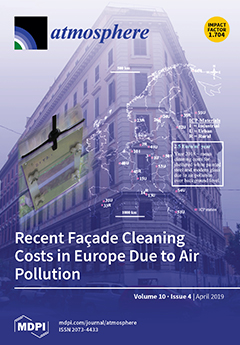Air-sea interactions play an important role in atmospheric circulation and boundary layer conditions through changing convection processes and surface heat fluxes, particularly in coastal areas. These changes can affect the concentrations, distributions, and lifetimes of atmospheric pollutants. In this Part II paper, the performance of the Weather Research and Forecasting model with chemistry (WRF/Chem) and the coupled WRF/Chem with the Regional Ocean Model System (ROMS) (WRF/Chem-ROMS) are intercompared for their applications over quadruple-nested domains in Australia during the three following field campaigns: The Sydney Particle Study Stages 1 and 2 (SPS1 and SPS2) and the Measurements of Urban, Marine, and Biogenic Air (MUMBA). The results are used to evaluate the impact of air-sea interaction representation in WRF/Chem-ROMS on model predictions. At 3, 9, and 27 km resolutions, compared to WRF/Chem, the explicit air-sea interactions in WRF/Chem-ROMS lead to substantial improvements in simulated sea-surface temperature (SST), latent heat fluxes (LHF), and sensible heat fluxes (SHF) over the ocean, in terms of statistics and spatial distributions, during all three field campaigns. The use of finer grid resolutions (3 or 9 km) effectively reduces the biases in these variables during SPS1 and SPS2 by WRF/Chem-ROMS, whereas it further increases these biases for WRF/Chem during all field campaigns. The large differences in SST, LHF, and SHF between the two models lead to different radiative, cloud, meteorological, and chemical predictions. WRF/Chem-ROMS generally performs better in terms of statistics and temporal variations for temperature and relative humidity at 2 m, wind speed and direction at 10 m, and precipitation. The percentage differences in simulated surface concentrations between the two models are mostly in the range of ±10% for CO, OH, and O
3, ±25% for HCHO, ±30% for NO
2, ±35% for H
2O
2, ±50% for SO
2, ±60% for isoprene and terpenes, ±15% for PM
2.5, and ±12% for PM
10. WRF/Chem-ROMS at 3 km resolution slightly improves the statistical performance of many surface and column concentrations. WRF/Chem simulations with satellite-constrained boundary conditions (BCONs) improve the spatial distributions and magnitudes of column CO for all field campaigns and slightly improve those of the column NO
2 for SPS1 and SPS2, column HCHO for SPS1 and MUMBA, and column O
3 for SPS2 at 3 km over the Greater Sydney area. The satellite-constrained chemical BCONs reduce the model biases of surface CO, NO, and O
3 predictions at 3 km for all field campaigns, surface PM
2.5 predictions at 3 km for SPS1 and MUMBA, and surface PM
10 predictions at all grid resolutions for all field campaigns. A more important role of chemical BCONs in the Southern Hemisphere, compared to that in the Northern Hemisphere reported in this work, indicates a crucial need in developing more realistic chemical BCONs for O
3 in the relatively clean SH.
Full article





